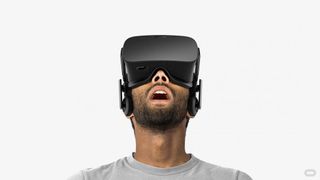This optical technique could solve virtual reality's eyestrain problem
Using actual 3D images

After wearing a virtual reality headset for a while, you may have noticed that eye fatigue starts to set in. The reason is a little-known neuroscience effect called the vergence-accommodation conflict.
In short, it's a mismatch between your eyes physically aiming at something and focusing on something. Most VR glasses ask you to stare at a screen a few centimetres from your eyes, but focus on a point that's much further away - a task that confuses the brain, which is used to those things usually being in the same place.
Now, however, optical engineers have developed a new type of 3D display that they say could solve this problem.
"We want to replace currently used AR and VR optical display modules with our 3D display to get rid of eye fatigue problems," said Liang Gao, from the University of Illinois at Urbana-Champaign.
"Our method could lead to a new generation of 3D displays that can be integrated into any type of AR glasses or VR headset."
How it works
Their new display module measures only 1 x 2 inches, but can produce depth cues that the brain sees in the same way it sees thing in the real world. It does that by dividing a digital display into subpanels that each create a 2D picture. Those subpanel images are shifted to different depths but the centers are all aligned with each other.
The result is images that appear to be at a different depth when a user looks at them. An algorithm blends the edges together so that the depths appear continuous, assembling a single 3D image.
Get daily insight, inspiration and deals in your inbox
Get the hottest deals available in your inbox plus news, reviews, opinion, analysis and more from the TechRadar team.
"People have tried methods similar to ours to create multiple plane depths, but instead of creating multiple depth images simultaneously, they changed the images very quickly," said Gao.
"However, this approach comes with a trade-off in dynamic range, or level of contrast, because the duration each image is shown is very short."
The next step is reduce the system's size, weight and power consumption so that it's more practical for actually mounting to a person's head. The team is now searching for partners to commercialise the technology.
The full details of the system were published in the journal Optics Letters.

